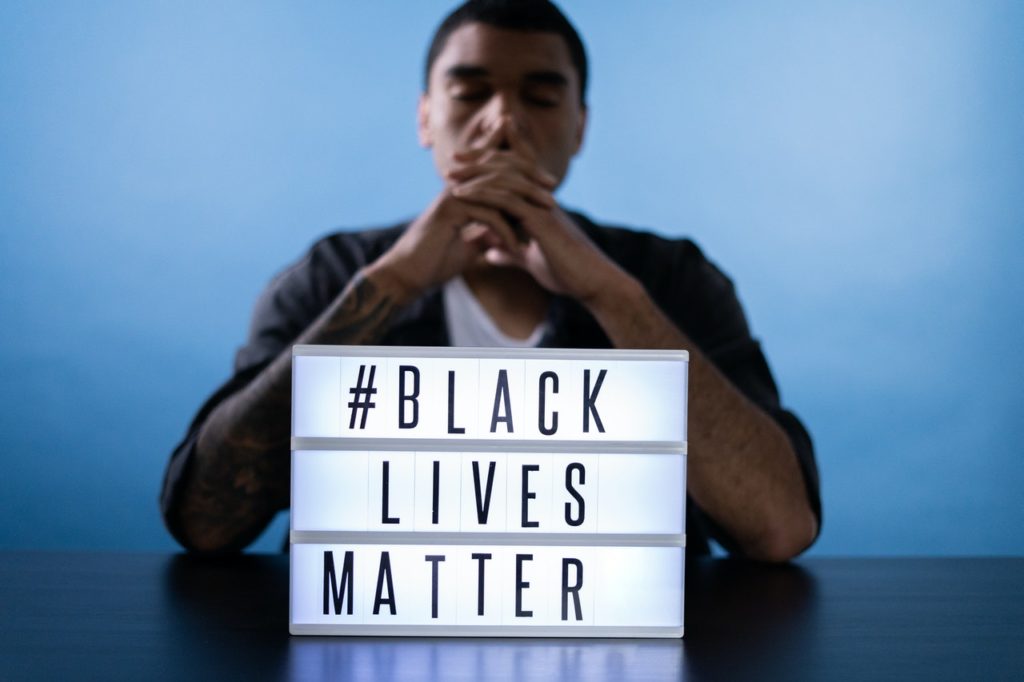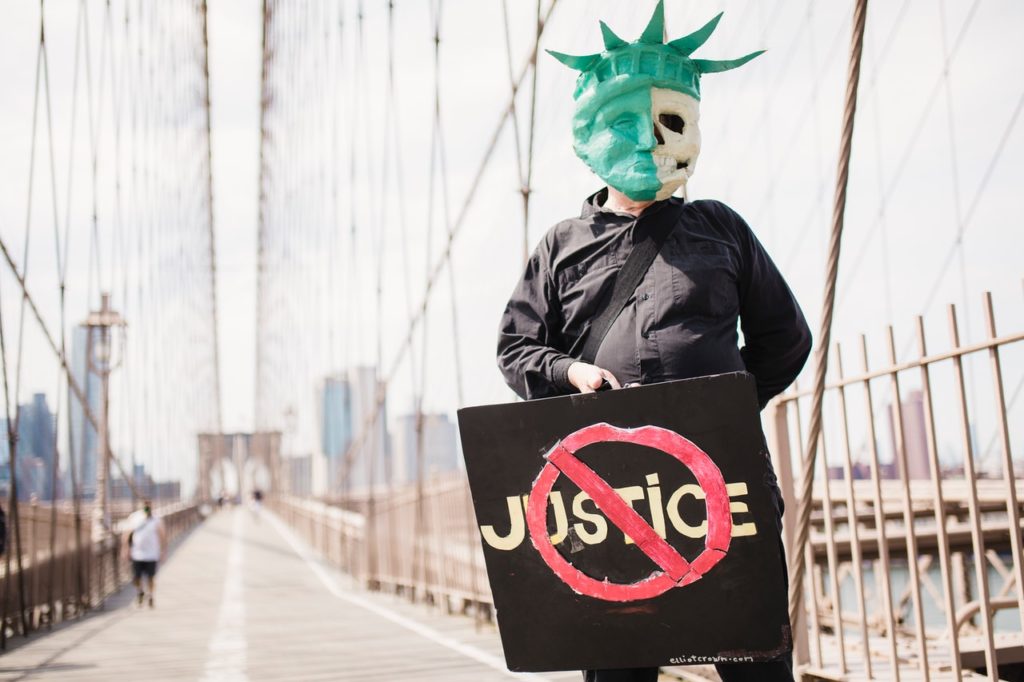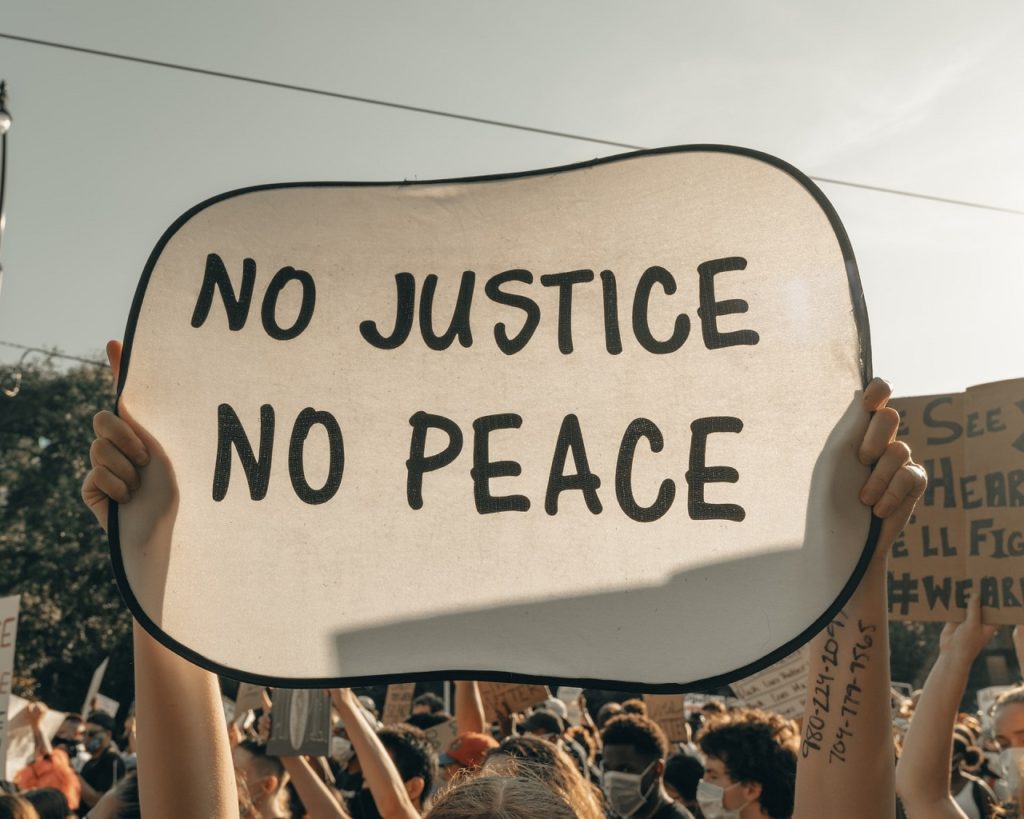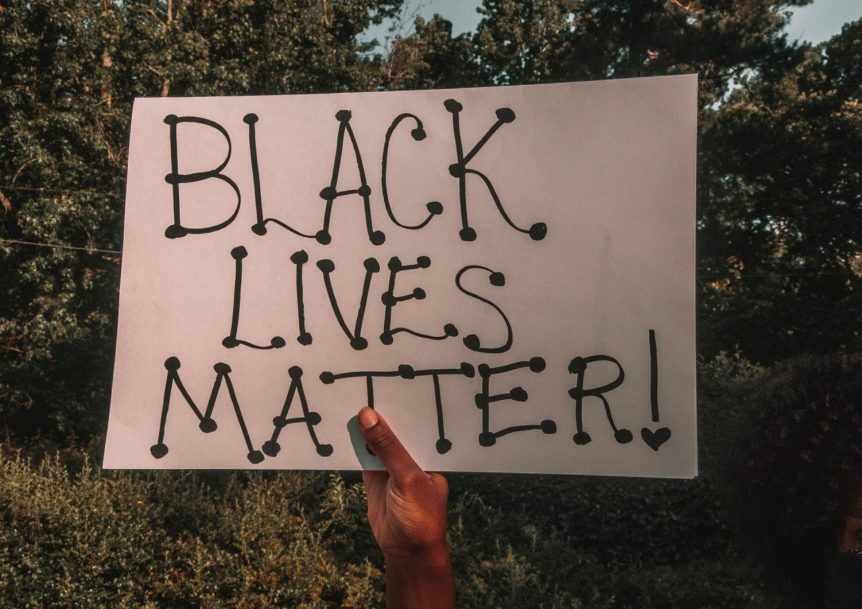On the evening of February 26, 2012, George Michael Zimmerman shot and killed 17-year old Trayvon Martin, as the young teen walked home from a convenience store with an iced tea and candy in hand. No one could ever have envisioned the ripple effect his alleged murderer’s acquittal would spur a year later.
What first started as a Black Lives Matter (BLM) hashtag in 2013 has since evolved into a massive civil and human rights movement, whose goal is to end white supremacy and systemic racism perpetrated against members of the Black community in the United States.
Since Martin’s death, Ahmaud Arbery, David McAtee, Breonna Taylor, and George Floyd, are just a few of the African-Americans who’ve had their lives cut short at the hands of racial impunity.
So, what exactly is the Black Lives Matter movement? And, what impact has it had on the legal and political landscape in the country? Here’s everything you need to know about it.
What Is Black Lives Matter?
Black Lives Matter is a human and civil rights movement that pushes for the liberation of the Black community from what has been state-inflicted and racially-motivated violence targeted at them.

The focus of the movement has been to fight for the fundamental reorganization of the society, to free Black people from systematic dehumanization and criminalization.
Before going any further, it’s important to make the distinction between Black Lives Matter the movement versus the Black Lives Matter organization.
The latter refers to a global decentralized foundation that has several chapters in the US, the UK, and Canada. Its mission is to push for the eradication of white supremacy and fight for the liberation of Black communities across the world.
The Black Lives Matter movement, or Movement for Black Lives as it is also called, is a conceptual collective umbrella of several Black liberation organizations in America. They do important work to effect significant policy change on both a local and national level for issues plaguing the African-American community.
Some of the notable organizations under the Black Lives Matter coalition include the Organization for Black Struggle, Millennial Activists United, the St. Louis Action Council, Assata’s Daughters, the Dream Defenders, the Black Youth Project, and several others.
When Did Black Lives Matter Start?
To answer this question, you also need to ask – How did Black Lives Matter Start? It all began with the #BlackLivesMatter social media hashtag in July 2013, after widespread public outrage over the outcome of the George Zimmerman case.
Zimmerman was acquitted on murder charges for the shooting of Trayvon Martin in an unfortunate incident that had occurred 17 months earlier.
The movement gained momentum in the following year when the deaths of two African-Americans – Michael Brown and Eric Garner – sparked civil unrest in Ferguson, Missouri, and New York City, respectively.
Since then, participants of the movement have been involved in street demonstrations to protest the growing trend of police brutality meted out at members of the Black community.
Black Lives Matter Founder
The call to action and hashtag was the creative work of Opal Tometti, Patrisse Khan-Cullors, and Alicia Garza. The three then embarked on an expansion mission of the BLM project between 2014 and 2016, to form a globally-connected network of activists under Black Lives Matter Inc. – the organization.
Nonetheless, what is usually referred to as the “Black Lives Matter” movement, is actually the coalition of Black liberation groups across the country that represents the interests of the African-American community.
The movement was born out of the need to create a united front to counter the growing violence against members of the Black community.
In July 2015, roughly 2,000 activists of the BLM movement convened at Cleveland State University to discuss various strategies they could employ to hold law enforcement accountable for their actions, on a national level.
The result of this meeting, however, was a large-scale social movement that led to the establishment of the Black Lives Matter platform. This united front articulates the demands, goals, and policy changes that the movement pushes for, to achieve the total liberation of Black communities across the nation.
The platform has six demands.
1. End the War on Black People
The platform demands an immediate end to the criminalization, dehumanization, incarceration, and killing of the youth in the African-American community. It also calls for an end to:
- Capital punishment, mandatory fines, money bail, court surcharges, fees, and “defendant-funded” court proceedings.
- Mass surveillance on African-American communities.
- The militarization of law enforcement, particularly on school and college campuses.
- The privatization of all criminal justice-related services, including jails, prisons, police, parole, and probation.
- The use of individuals’ past criminal history to determine whether or not they are eligible for employment, housing, licenses, education, and several other services.
2. Reparations

The movement further demands reparations for both past and ongoing harm perpetrated by the government, various institutions, and corporations that have profited from the exploitation of and harm done to Black people. These reparations include:
- A guaranteed minimum livable income for all African-Americans, to stop the continued exploitation of, discrimination towards, and divestment from the Black community.
- Compensation for the cultural and educational extraction, erasure, and exploitation of the community, through mandatory public school curriculums that critically explore the social, political, and economic impact of slavery and colonialism.
- Compensation for the systemic denial of full and free access to high-quality educational opportunities for members of the African-American community.
- Compensation for the wealth that was stripped from the Black community through racialized capitalism, food apartheid, slavery, and environmental racism.
- State and federal level legislation that requires the United States to recognize the lasting effects of slavery and come up with an executable plan to address those effects.
3. Invest/Divest
The BLM movement also calls for more investment in the health, safety, and education systems in Black communities and divestment from exploitative measures taken against the community. Some of the policy changes fronted by the movement include:
- Divestment from military expenditures and reinvestment in the domestic infrastructure and wellbeing of the Black community.
- Divestment from the industrial use of fossil fuels and reinvestment in sustainable energy solutions for the community.
- Investing in equitable and meaningful universal health care that guarantees mental health services, full reproductive services, quality, and comprehensive child and elder care, as well as specific services for trans, gender non-conforming, and queer people.
- Reallocating funds at the local, state, and federal levels, from policing and incarcerating Black people to safety strategies like employment programs, restorative justice services, and education.
- Retroactively decriminalizing, releasing, and expunging records of individuals with prostitution and drug-related offenses and channeling the resulting revenue and savings into programs designed to support people who have been affected by the drug and sex trade.
4. Economic Justice
The BLM movement demands economic justice that focuses on the reconstruction of the economy, to ensure that the African-American community is not only granted access but also has collective ownership of wealth and resources.
Some of the notable issues the movement actively pushes for include:
- Authorization “On-Demand Economy” workers working in both the private and public sectors to organize.
- Democratic control over how the available resources are used, distributed, and preserved to ensure that it is done is a way that honors and respects the rights of the Black indigenous community.
- The development of social and/or cooperative networks through government-directed resources – like loans and tax incentives – to facilitate trade both in Black communities and at a global level.
- The establishment of state and federal job programs specifically targeted at the marginalized members of the Black community. The job programs should provide not only adequate support for the local workers, Black-owned enterprises, and unions but also offer a living wage.
- The sustainable and radical redistribution of wealth through the progressive restructuring of tax codes at federal, state, and local levels.
5. Community Control
The BLM movement demands more control in the formulation of the policies, laws, and institutions that affect the Black community. It calls for a seat at the table when it comes to issues affecting the local schools, economies, budgets, land, and police department to ensure that the rights and history of the Black community are respected.
Some of the notable demands include:
- Community control of federal, state, and local law enforcement agencies. This is to ensure that the communities most affected by racially-motivated destructive policing are given the authority to hire and fire the offending officers, determine the disciplinary action that should be taken against them, control policies and budgets, and subpoena the relevant agency information should the need arise.
- Direct participatory budgeting at the federal, state, and local levels.
- Ending the privatization of education, and giving the real power to the students, parents, and school community members, to have more of a say over the discipline policies, hiring and firing of school leadership, and community control over the curriculum.
6. Political Power

Last but not least, the movement further calls for a total transformation of the existing US political system to pave the way for the creation of a true democracy that allows the Black community and marginalized populations to exercise their full political power.
It would involve taking the following measures.
- Ending “money controlling” politics through unchecked corporate donations to allow for public financing of elections.
- Full representation for every individual, universal access to the internet, and net neutrality.
- Releasing all Black political prisoners and ending the repression of political parties and criminalization of what has historically been viewed as Black political activity.
- The protection of and increased funding for Black institutions such as Black media, Historically Black Colleges and Universities (HBCUs), and social, political, and cultural formations.
- The right to vote for all people through the universal registration of voters, electoral expansion, and election protection.
Who Funds Black Lives Matter?
In a 2015 article published by POLITICO, activists in the protest movement met with liberal donor club members to discuss all-things funding.
The Democracy Alliance – a major liberal donor club – recommended that its donors step up their donations in support of the endorsed liberation groups within the BLM movement.
Since then, however, there have been several high-profile donors who have funded the movement, with some of the most notable ones being Solidaire, Leah Hunt-Hendrix, the Ford Foundation, and George Soros.
Police Brutality Against Blacks
The most vocal demand of the movement protests witnessed across the country – many of which degenerated into Black Lives Matter riots – is the fight to end the police brutality meted out at members of the African-American community.
According to Black Lives Matter statistics, the country has more than 200 entities charged with the direct oversight of local law enforcement agencies.
But, despite the alarming trend in the unjustified disproportionate use of excessive, and often lethal force on the Black community, there are still no national standards that allow for civilian oversight for law enforcement – both in patrol settings, as well as in custody environments like holding cells, lock jails, and detention facilities.
As if that wasn’t enough, state law in 30 states makes it impossible to alter the contractual bargaining power to hire and fire police officers. On a federal level, agencies that inflict violence on civilians have close to zero accountability to the most affected minority populations.
The solution proposed by the Black Lives Matter movement involves:
- Determining the appropriate disciplinary action to be taken in instances of police misconduct related to the use of excessive or lethal force
- Determining the funding of law enforcement agencies
- Getting and retaining concrete information retrieval methods (like subpoena power) from both law enforcement and third parties in circumstances that involve the use of excessive, lethal, or sexual force.
- Giving civilian oversight agencies the power to hire and fire law enforcement officers
- Setting and enforcing policies
By implementing these policy changes as proposed by the movement, communities will be able to significantly minimize the number of African-American people affected by police violence.
The Long Walk to True Democracy

The Black Lives Matter movement has come a long way since it first began in 2013. While the country still has a long way to go in effecting the proposed policy changes, one thing is for sure – It’s no longer business-as-usual.
The BLM movement is transforming the way Americans organize, think, and talk about racial equality, freedom, and liberation. It has given everyone a framework to envision what true democracy looks like.
If you are a victim of racially-motivated police brutality, get in touch with any of the Black lawyers in our panel of competent attorneys to get the justice you deserve.
For any legal questions related to the BLM movement, feel free to chat online with a Laws101.com attorney. A volunteer legal assistant is always on call to address any legal issues you may have.
